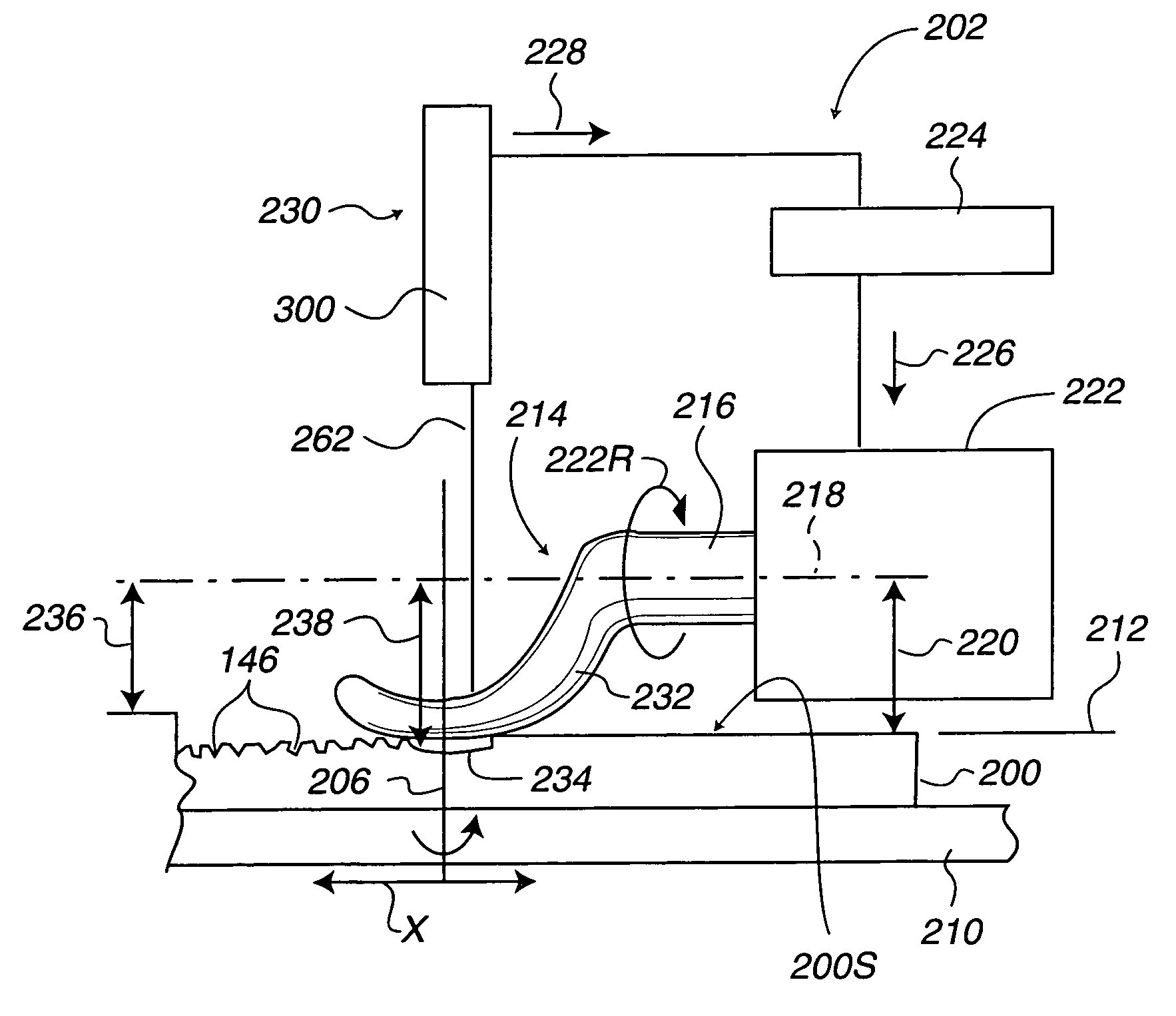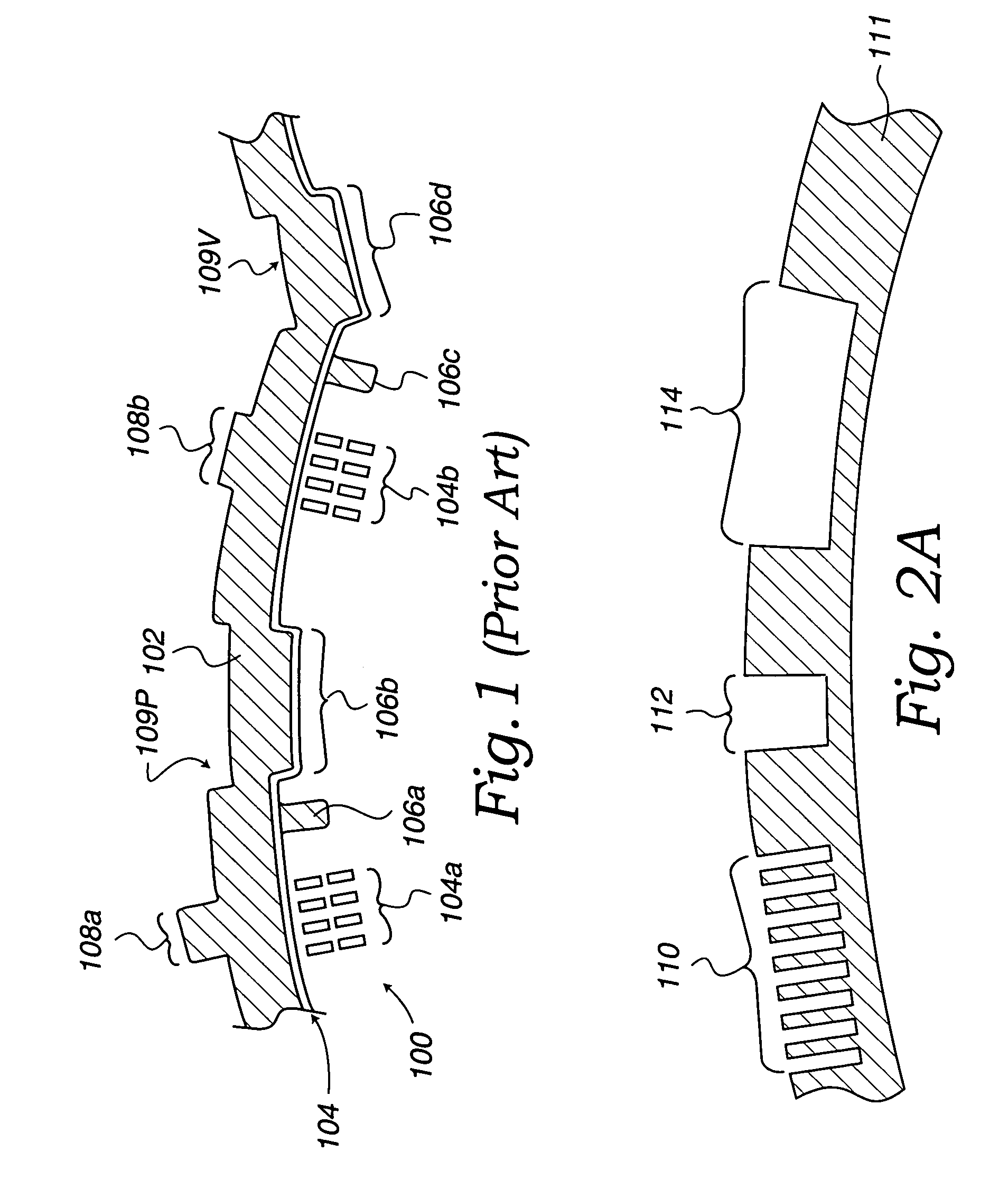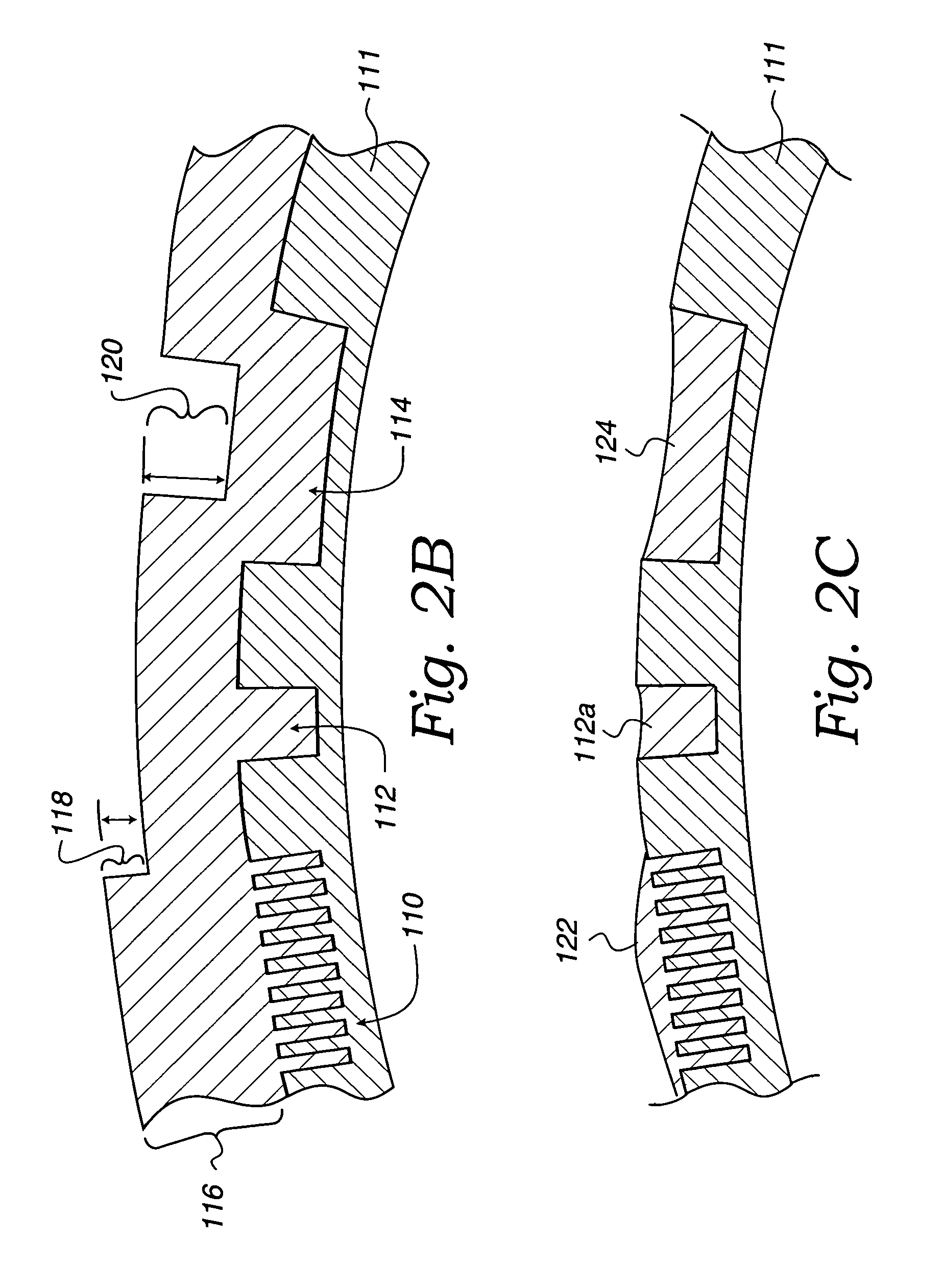Methods of and apparatus for pre-planarizing a substrate
a substrate and pre-planarization technology, applied in the field of semiconductor manufacturing, can solve the problems of current planarization techniques not being able to properly planarize such copper topography
- Summary
- Abstract
- Description
- Claims
- Application Information
AI Technical Summary
Benefits of technology
Problems solved by technology
Method used
Image
Examples
Embodiment Construction
[0035]An invention is described for apparatus, methods, and a system for producing a normalized surface in preparation for a chemical mechanical planarization (CMP) process. It will be obvious, however, to one skilled in the art, that embodiments of the present invention may be practiced without some or all of these specific details. In other instances, well known process operations have not been described in detail in order not to obscure the present invention.
[0036]The embodiments of the present invention provide an apparatus, method, and system for performing a pre-planarization process in order to normalize a surface to be planarized. This normalization enables standardization of a subsequent planarization process. With this standardization, a number of benefits such as predictability, cost savings, etc., are realized. In one embodiment, the pre-planarization process is a process which scratches the top surface, e.g., a copper layer, of a copper topography of the substrate. As u...
PUM
 Login to View More
Login to View More Abstract
Description
Claims
Application Information
 Login to View More
Login to View More - R&D
- Intellectual Property
- Life Sciences
- Materials
- Tech Scout
- Unparalleled Data Quality
- Higher Quality Content
- 60% Fewer Hallucinations
Browse by: Latest US Patents, China's latest patents, Technical Efficacy Thesaurus, Application Domain, Technology Topic, Popular Technical Reports.
© 2025 PatSnap. All rights reserved.Legal|Privacy policy|Modern Slavery Act Transparency Statement|Sitemap|About US| Contact US: help@patsnap.com



